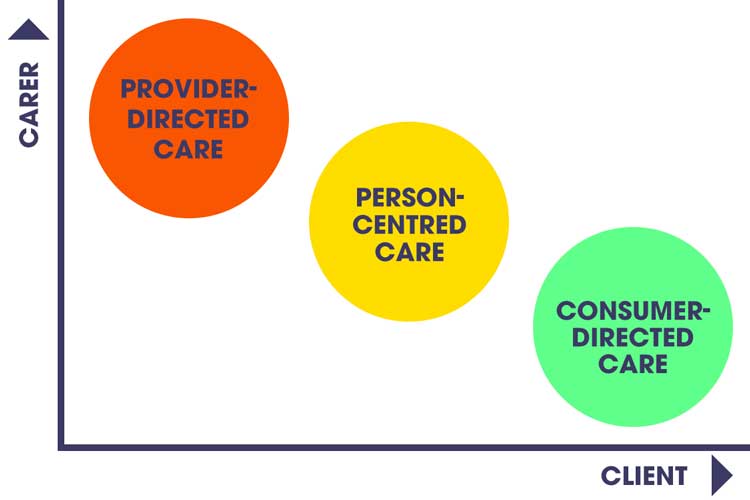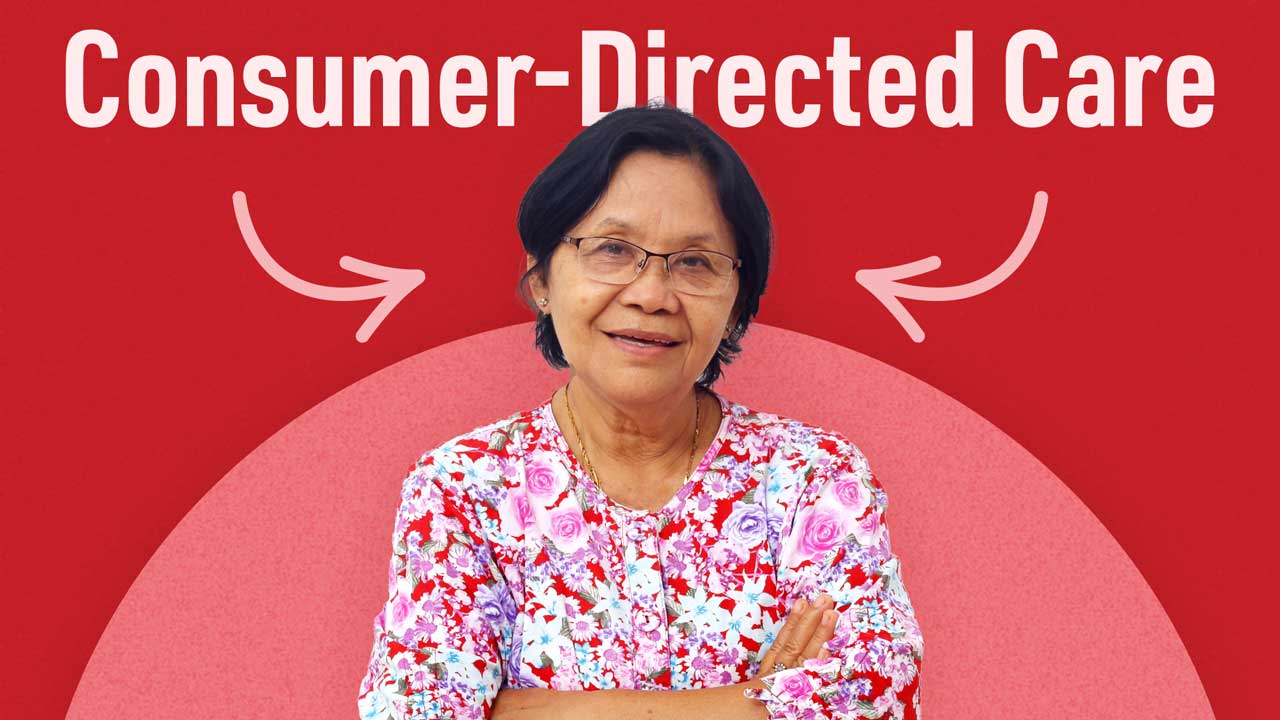What is ‘Consumer-directed Care’?
Consumer-directed care (CDC) is a ‘self-directed’ healthcare model in which the client is afforded flexibility and choice in the delivery of their care (My Aged Care 2023).
Under the CDC model, consumers are empowered to choose the type of supports they would like to receive, who delivers these supports, and when and where they are delivered - care decisions that would historically be made by the care team rather than the client (My Aged Care 2023; Aged Care Guide 2023).
All aged care Home Care Packages (HCP) in Australia are based on a consumer-directed care model (My Aged Care 2023).
Furthermore, since 2017, HCP funding has been allocated directly to the consumer rather than to providers (Aged Care Guide 2023).
Consumer-directed Care v Person-centred Care

Consumer-directed care and person-centred care are concepts underpinned by similar histories and philosophical perspectives; however, they are not the same (VIC DoH 2014).
Person-centred care (PCC) is a model of care where individuals are seen as active participants and partners in healthcare, supplanting the outdated view of patients as passive care recipients (Levett-Jones 2019).
Consumer-directed care takes this concept a step further by ‘maximising the opportunity of choice’ (VIC DoH 2014) and promoting the care recipient from a participant or partner to a director and chief decision-maker.
In CDC, the care team’s role is to help identify and provide any assistance needed to enable the client to make their own decisions about their care. This includes an emphasis on improving the consumer's health literacy.
The care team and clinicians may contribute their professional expertise or recommendations. However, the final say ultimately lies with the client.
Under the CDC, it’s understood that the care recipient also has the right to accept and delegate as much or as little of their care decisions as they wish (Aged Care Guide 2023).
Principles of Consumer-directed Care
Consumer-directed care is based on the following six principles:
- Consumer choice and control
- Respecting and upholding consumers’ rights
- Respectful and balanced partnerships between consumers and providers
- As much or as little participation in care management as the consumer wishes
- Wellness and reablement
- Transparency about the way in which package funding is being used, and the services the consumer receives.
(Aged Care Guide 2023; COTA 2019)
Consumer-directed Home Care
In Australia, CDC is currently available for all Home Care Packages. A consumer-directed home care package aims to do the following:
- Give the client more control over the services and providers they choose to receive care from
- Give the client the opportunity to develop their own care plan with their service provider
- Allow the client to dictate how much involvement they have in managing their HCP
- Offer more transparency about how the client’s care package is funded, and how the funds are spent
- Offer ways for the client to actively monitor the performance of their HCP to determine whether it is still meeting their care needs.
(Aged Care Guide 2023)

The Future of Consumer-directed Care in Australia
The CDC care model has only been mandated for Home Care Packages in Australia. The government has indicated plans to introduce a CDC model into residential care settings in the future; however, there is currently no specific date for residential aged care providers to implement consumer-directed care (Aged Care Guide 2023).
Test Your Knowledge
Question 1 of 3
True or false: Consumer-directed care is mandated for residential aged care.
Topics
References
- Aged Care Guide 2023, ‘What is Consumer Directed Care (CDC) in Home Care?’, Aged Care Guide, 10 January, viewed 26 August 2024, https://www.agedcareguide.com.au/information/consumer-directed-care
- COTA 2019, What is CDC?, COTA, viewed 26 August 2024, https://www.cota.org.au/information/aged-care-for-providers/home-care-today-providers/consumer-directed-care/what-is-cdc/
- Levett-Jones, T 2019, ‘Key Attributes of ‘Patient Safe’ Communication’, in T Levett-Jones (ed.), Critical Conversations for Patient Safety: An Essential Guide for Health Professionals, 2nd edn, Pearson, Sydney, viewed 26 August 2024, https://www.pearson.com/en-au/media/2503508/9781488623004.pdf
- My Aged Care 2023, Home Care Packages Program Manual for Care Recipients, Australian Government, viewed 26 August 2024, https://www.myagedcare.gov.au/sites/default/files/2023-01/operational-manual-for-home-care-package-consumers.pdf
- Victoria Department of Health 2014, Person-centred Care and Consumer Directed Care Clarity in Communication: Discussion Paper, Victoria State Government, viewed 26 August 2024, https://www.health.vic.gov.au/sites/default/files/migrated/files/collections/research-and-reports/p/person-centred-care-and-consumer-directed-care-clarity-in-communication-2014---pdf.pdf
 New
New 
